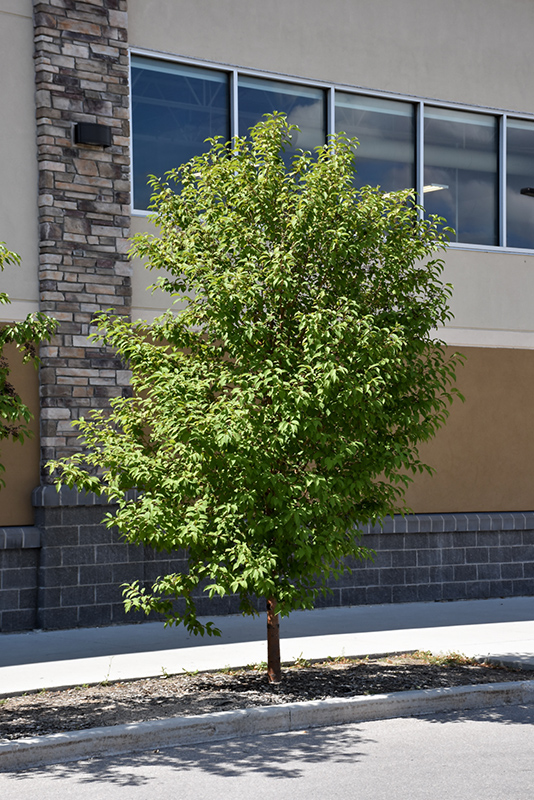Plant Library
Height: 25 feet
Spread: 15 feet
Sunlight:
![]()
![]()
Hardiness Zone: 2a
Other Names: Amur Chokecherry
Description:
A distinctive flowering tree for residential and commercial plantings; an all season ornamental, with stunning bark color; strong branching and stems, with less frost cracking; low maintenance, immune to black knot
Ornamental Features
Klondike Amur Cherry features dainty racemes of fragrant white flowers hanging below the branches in mid spring. It has attractive forest green deciduous foliage. The textured oval leaves are highly ornamental and turn yellow in fall. The peeling gold bark is extremely showy and adds significant winter interest.
Landscape Attributes
Klondike Amur Cherry is a dense multi-stemmed deciduous tree with an upright spreading habit of growth. Its average texture blends into the landscape, but can be balanced by one or two finer or coarser trees or shrubs for an effective composition.
This is a relatively low maintenance tree, and is best pruned in late winter once the threat of extreme cold has passed. It is a good choice for attracting birds to your yard. It has no significant negative characteristics.
Klondike Amur Cherry is recommended for the following landscape applications;
- Accent
- Shade
- Hedges/Screening
Planting & Growing
Klondike Amur Cherry will grow to be about 25 feet tall at maturity, with a spread of 15 feet. It has a low canopy with a typical clearance of 3 feet from the ground, and is suitable for planting under power lines. It grows at a medium rate, and under ideal conditions can be expected to live for 40 years or more.
This tree does best in full sun to partial shade. It does best in average to evenly moist conditions, but will not tolerate standing water. It is not particular as to soil type or pH. It is somewhat tolerant of urban pollution. This is a selected variety of a species not originally from North America.

